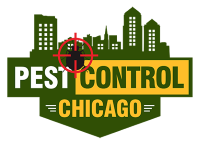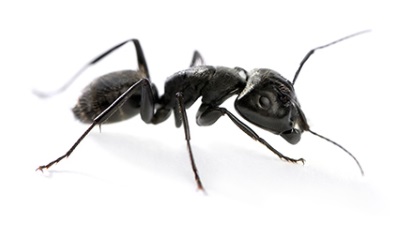The Basic Principles Of Pest Control Chicago
Table of ContentsMore About Pest Control ChicagoThe Ultimate Guide To Pest Control ChicagoThe Pest Control Chicago IdeasThe Single Strategy To Use For Pest Control ChicagoThe 30-Second Trick For Pest Control ChicagoThe Best Strategy To Use For Pest Control Chicago
Growing or harvesting a crop prior to (or after) an insect is existing reduces bug damages by avoidance. Capturing and calculating a bug's expanding degree days can help with planning around an insect's lifecycle. Damages resistance can in some cases be attained by planting a crop early to make sure that the plants are stronger, much more immune, and extra tolerant to damage by the time insect pests exist.
By developing a small, controlled area that the parasites prefer, it is possible to draw away parasites away from the key plant. Two techniques for this are trap chopping and strip harvesting. is growing a recommended host plant of an insect parasite near the key crop that is to be secured.
If essential, the pests can then be killed in the trap crop. Trap crops can be any types that the bug preferseven be the very same varieties as the key plant - Complete pest control Chicago. If the trap plant coincides types as the main plant, it must be grown each time that will best entice the insect away from the primary crop
Little Known Facts About Pest Control Chicago.
 This technique is helpful when collecting a trap plant due to the fact that it preserves some habitat for the bug. Consequently, the bug does not move to discover brand-new habitat in a surrounding higher value or even more prone plant. https://www.ted.com/profiles/47839279. The strategies already mentioned emphasis on reducing plant exposure to insect parasites, however it is additionally possible to minimize yield loss even when insect damages happens
This technique is helpful when collecting a trap plant due to the fact that it preserves some habitat for the bug. Consequently, the bug does not move to discover brand-new habitat in a surrounding higher value or even more prone plant. https://www.ted.com/profiles/47839279. The strategies already mentioned emphasis on reducing plant exposure to insect parasites, however it is additionally possible to minimize yield loss even when insect damages happensPlant them correctly and keep the plants healthy and balanced by meticulously watering, fertilizing, and pruning them. If a bug or condition causes inappropriate damage in spite of preventative initiatives, pick an effective management technique that will have the least quantity of influence on various other living animals and the setting.
What Does Pest Control Chicago Do?
 Search for signs and symptoms the plant displays as a result of parasite activity. Analyze your plants commonly. Recognize your plants to make sure that the twisted leaves, uncommon coloration, or strange-looking frameworks you see are not a normal component of the plant. Try to dismiss site-related issues by making certain that the soil type, water drainage conditions, fertility degree, and other ecological problems agree with for the plant.
Search for signs and symptoms the plant displays as a result of parasite activity. Analyze your plants commonly. Recognize your plants to make sure that the twisted leaves, uncommon coloration, or strange-looking frameworks you see are not a normal component of the plant. Try to dismiss site-related issues by making certain that the soil type, water drainage conditions, fertility degree, and other ecological problems agree with for the plant.Insects and termites often are connected with specific plants, and they adhere to specific growth and behavior patterns as the period proceeds. Use recommendation publications from the library or garden facility to recognize insects. If you can not discover an exact summary there, speak with a person in your neighborhood extension office. Learn more about the insect's life cycle, actions, and natural opponents.
If so, an application of a nonselective pesticide can eliminate them, allowing the pest population to rebound uninhibited by predators and bloodsuckers, which might have been providing considerable control. If a control is needed, think about physical or biorational techniques. If they are not available or unwise, you may need to carefully use a conventional chemical control.
Unknown Facts About Pest Control Chicago
 As an example, some aphids and termites can be ripped off by spraying the plant with water. Bagworm larvae can be picked off a plagued plant. You can use traps to capture particular pests, and obstacles to shield plants from insect attack or illness infection. One effective technique for regulating gypsy moth larvae on handful of trees is to put a band of folded up cloth around the tree trunk to offer a fabricated resting site for the caterpillars, and afterwards damage the caterpillars that gather there.
As an example, some aphids and termites can be ripped off by spraying the plant with water. Bagworm larvae can be picked off a plagued plant. You can use traps to capture particular pests, and obstacles to shield plants from insect attack or illness infection. One effective technique for regulating gypsy moth larvae on handful of trees is to put a band of folded up cloth around the tree trunk to offer a fabricated resting site for the caterpillars, and afterwards damage the caterpillars that gather there.In some instances, the best service might be literally getting rid of the plant and replacing it with one that will not be impacted by the bug or illness. Thinning jampacked plants to boost air circulation can decrease numerous illness issues. Biorational approaches can be separated right into 2 teams. The first group includes living organisms that can kill the insect.
An example of an approach that makes use of a naturally occurring biochemical is the bacterium Bacillus thuringiensis see this (Bt). Bt has a healthy protein that is toxic to particular insects, yet safe to other organisms.
The 8-Minute Rule for Pest Control Chicago
When the delicate insect bug feeds on the splashed leaves, it will certainly ingest the protein and be eliminated. Traditional chemicals are made use of only as a last resource in an IPM program, but occasionally are the most reliable means of control. To have the best effect, these products need to be used on a specific part of the plant when the insect is most at risk.
In a lot of cases, environmentally risk-free chemicals such as horticultural oil or insecticidal soap are reliable choices - https://trello.com/w/pstc0ntrlchg. Once again, applications must be timed meticulously to have the greatest result on the pest insect populace. Due to the fact that they have no residual task after they have actually dried, soaps and oils are usually the option that is the least disruptive to populaces of advantageous microorganisms
Use these words as guidelines to assist you select the least unsafe product among the effective alternatives. For a lot of landscape bugs, you require to think about chemicals in just the initial 2 categories.
A Biased View of Pest Control Chicago
Refer to the Woody Ornamental Insect, Mite, and Condition Monitoring Overview, published by Penn State Extension, or to an additional existing recommendation for a listing of materials that are registered for usage on plants in your state. Check out the label to ensure that you have actually selected a product that works versus the bug you have identified, and pick your timing based upon expert recommendations.